Manja the rare melanistic serval: Our Namiri Plains’ celebrity
While exploring the grasslands close to Namiri Plains, you might be fortunate enough to come face to face with one of our most beautiful and unique wildcats – Manja, the melanistic serval.
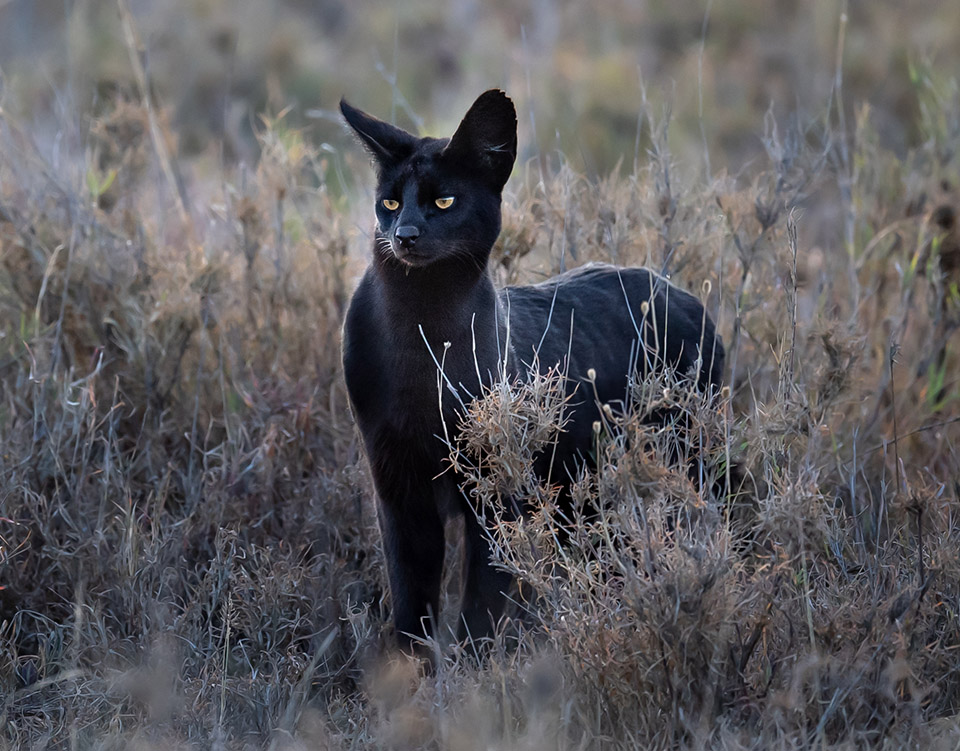
Photo credit: George Turner / @georgetheexplorer
What is melanism?
Melanism is a unique trait carried by a recessive gene that causes excess production of the dark-coloured pigment melanin in skin, feathers, and hair. Not to be confused with albinism — which is a lack of this pigment in these features.
How do melanistic servals come to be?
This recessive gene causes the serval’s usually golden, brown spotted coat to become completely black — this primarily occurs in East Africa, particularly in the highland regions, which are more than 2,000m above sea level. This phenomenon is known to scientists as the ‘thermal melanism hypothesis’. It states that animals who live in higher altitudes — and are therefore subject to colder temperatures — have a greater likelihood of being melanistic, so as to absorb more solar radiation, warm up more quickly, and maintain their activity levels.
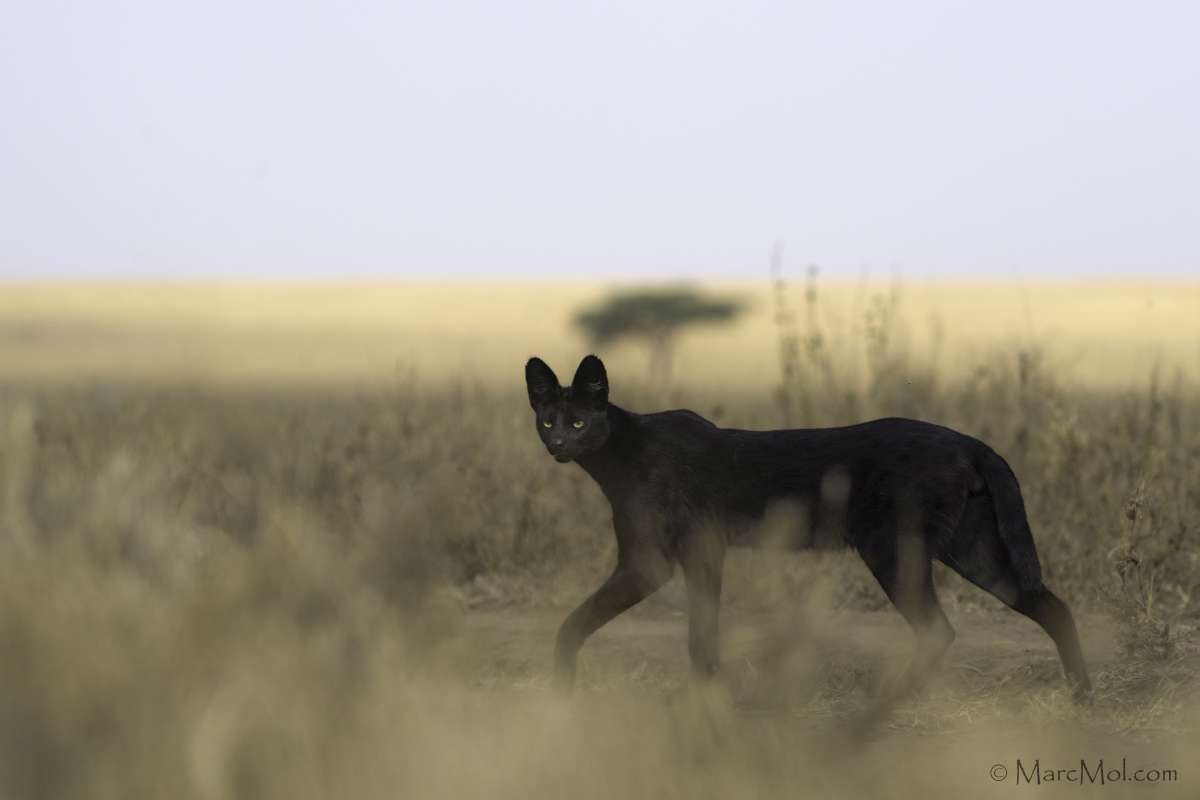
Photo credit: Marc Mol
The hypothesis also states that darker colours are favourable at high altitudes in order to increase protection against the sun’s UV rays. At around 1,000m above sea level, Namiri Plains is located considerably lower than the normal altitude at which melanism is more prevalent. We believe it’s likely that this particular serval travelled from the nearby – and much higher – Ngorongoro Crater and established a new territory close to our camp.
A unique sighting that should be on everyone's bucket list
According to one of our guests and photographer Marc Mol, up until Manja was sighted there were believed to have been only four other Melanistic Serval seen in the wild in East Africa. So not only is Manja a rare sighting because of his melanism, or because he lives in an uncommon location for servals, but also because he has picked Namiri Plains — the big cat haven of the Serengeti — to make his home. Our guides know Manja to be a bold little cat, but it takes some street smarts and courage to stand your ground in a territory run by lion and cheetah.
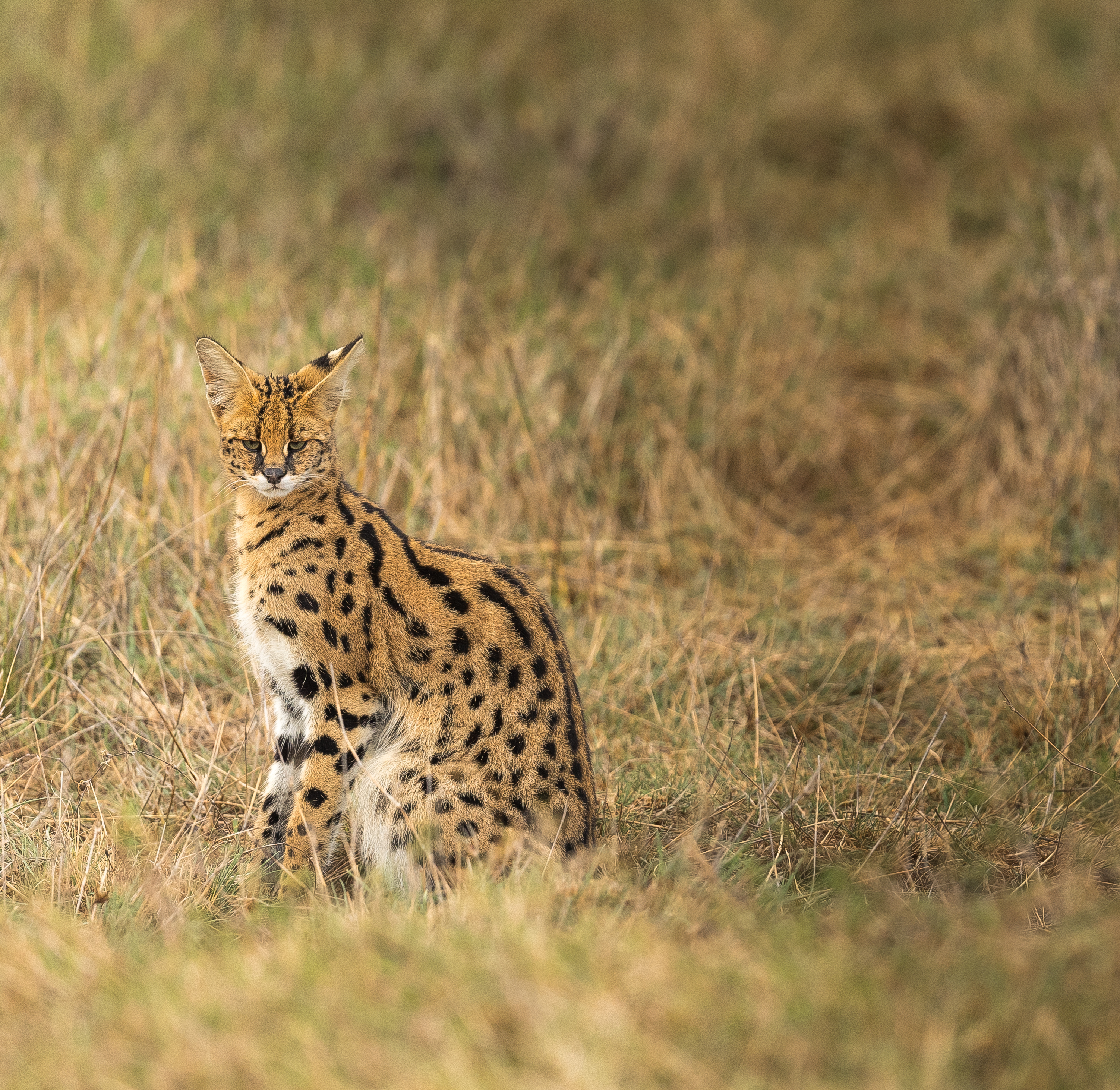 What a 'normal' serval looks like
What a 'normal' serval looks like
The circle of life: melanistic kittens!
In November 2019, George Benjamin shared this about his encounter with Manja.
‘For context, even seeing a “normal” serval is tough. They’re shy, secretive cats that tend to live in tall grasses – the perfect combination for staying unnoticed. Every time I’ve been privileged enough to see them, my heart skips a beat. There’s no guarantee that Manja – should he find a mate – will produce melanistic kittens. As melanism is carried by a recessive gene, it could be years before any others begin appearing in the area. The hope, for now, is that he continues to flourish in the grasslands and build on his territory. Also, what other serval could resist those charming good looks?’
In July 2020, Manja's good looks did in fact secure him a mate, and in mid-September 2020, his mate had produced melanistic serval kittens — as described above by George — an extremely unusual event to have occurred.
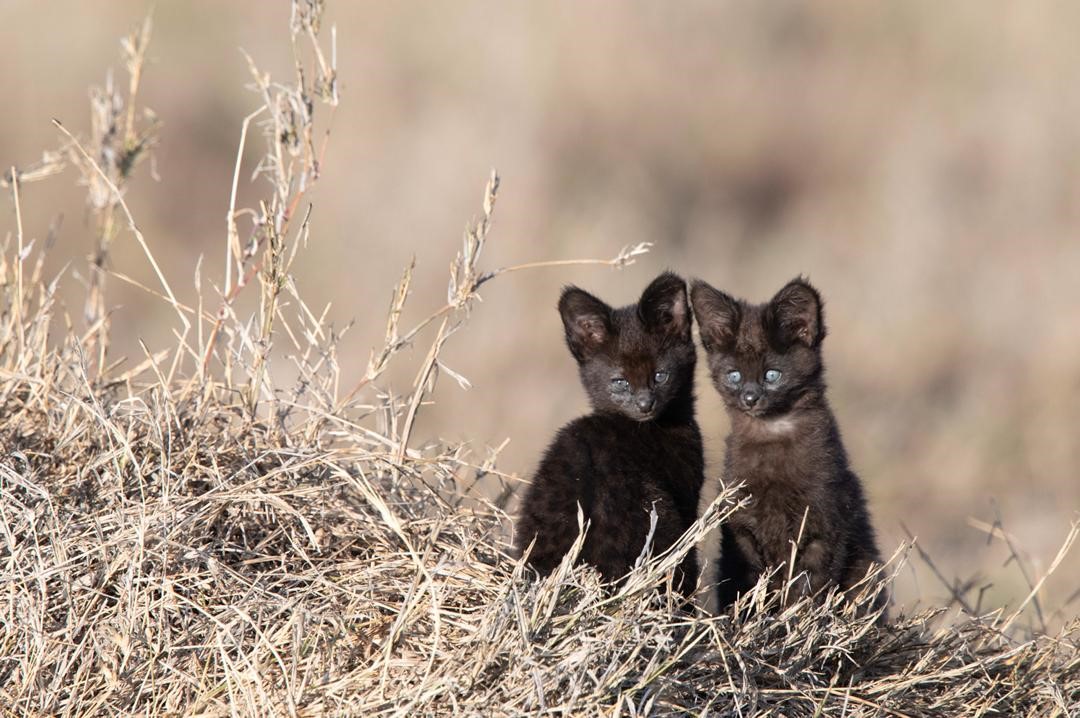
Then most recently on the 6th August 2021, guest and admired wildlife photographer Will Burrard-Lucas and his guide Keko were out in the plains near camp shooting the incredible Bob Junior, when Keko caught a glimpse of what he thought was a black serval. After a bit of a hunt around the Kopje they were amazed to find a black kitten serval, he was quite shy hiding in the bushes, not providing Will with the best angle for a shot. So over the next few days, Will and Keko went back to the Kopjes and were astonished to experience the wonderful sighting of a 'normal' mother serval and her two kittens, one with the 'normal' dark-spotted tanned fur and the other completely black! Manja has done it again, producing his third melanistic serval kitten with his mate — what a phenomenon. Read about Will and Keko's full experience that led up to these amazing images.
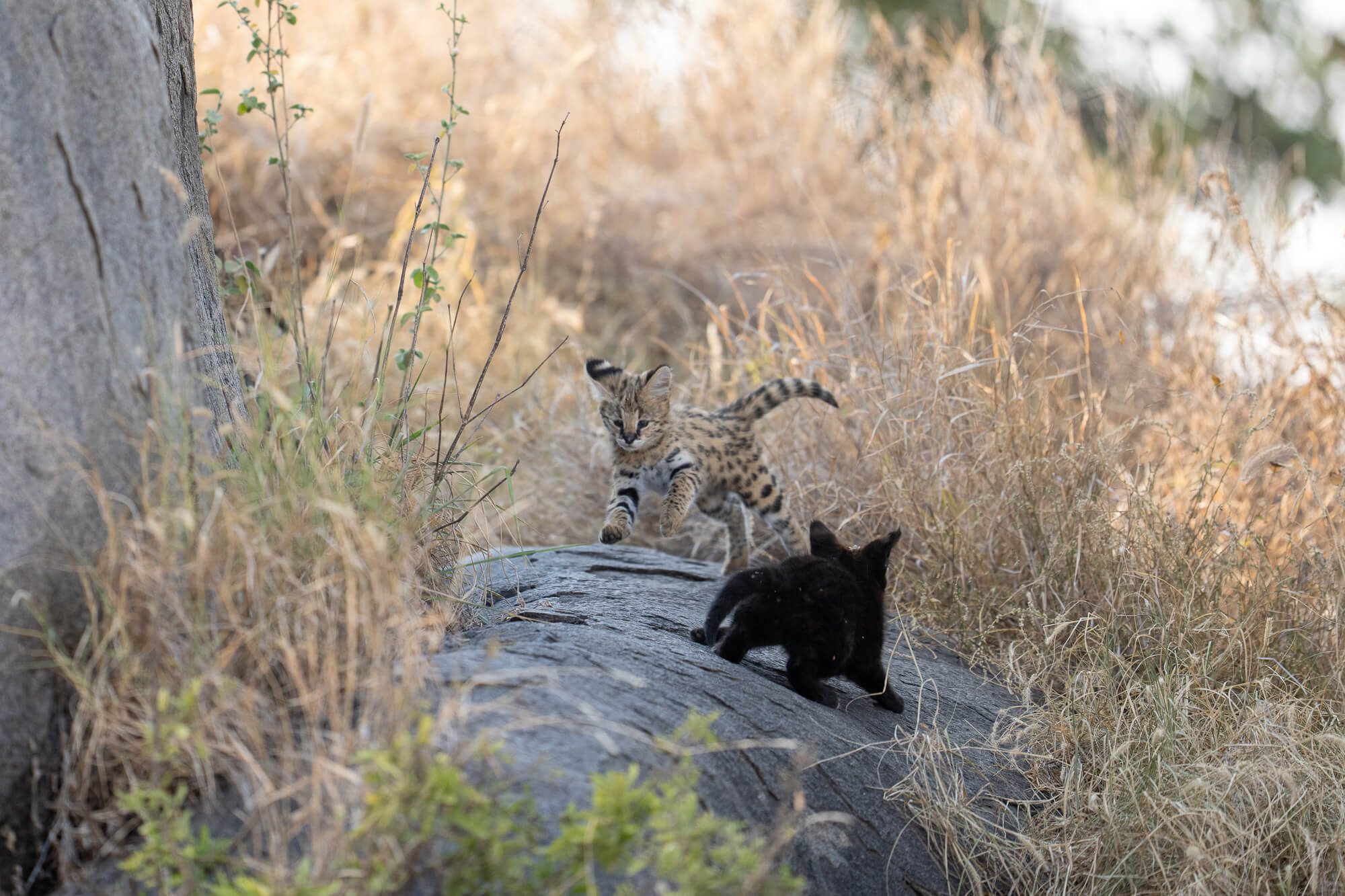
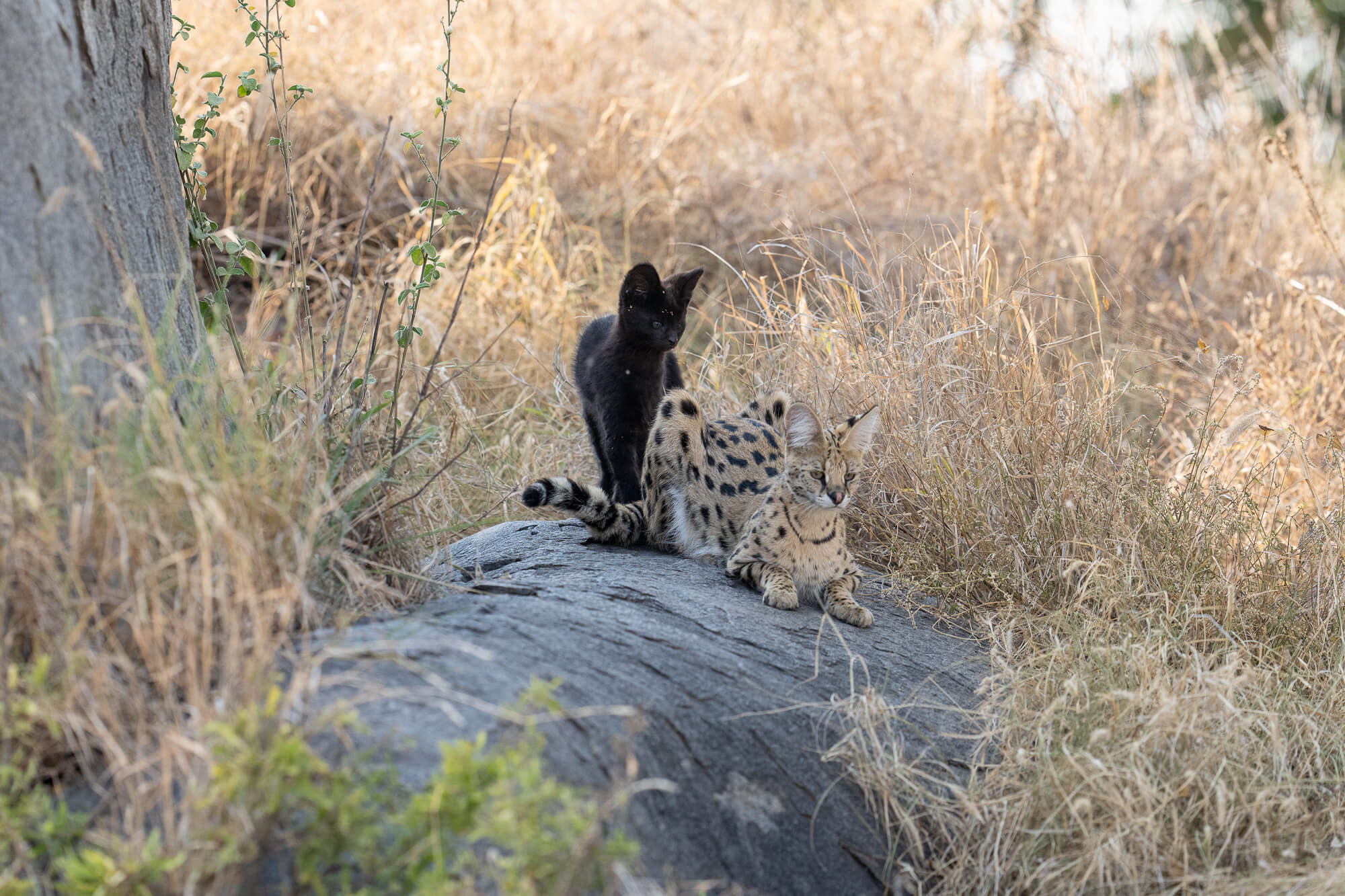
Photo credit: Will Burrard-Lucas / @willbl
Manja the celebrity
Manja isn’t just a celebrity in the Serengeti – he’s world-famous! His image was shared by BBC Earth, National Geographic, and The Discovery Channel and he has been featured in a number of other esteemed publications and social media around the globe.
What makes the Namiri Plains area so special?
For 20 years, the grasslands surrounding Namiri Plains in the Serengeti were closed off to people and tourism. This was done to encourage and support the growth of declining cheetah populations. This decisive action led to the plains now being known as a haven for all cats - big and small.
One other feature of the area that makes it so appealing to these cats is the underground pockets of permanent water sources that derive from the Ngare Nanyuki underground river. These small pockets of water can be found in the area throughout the year which means that there are high concentrations of resident plains game which are found here at any time of the year – something these predators seriously love; it’s what keeps them coming back and hanging around the plains for such long periods of time.
Join us an Namiri Plains
The closest neighbour to Namiri Plains is over an hour’s drive away, so while staying with us you’ll feel as though you have this part of the Serengeti all to yourself. The camp was re-imagined in late 2019, with expansive views over the Serengeti, to be viewed from your private balcony or from the lodges pool or lounge area. Namiri Plains is elegant, stylish, and blissfully comfortable and our warm and friendly staff are ready to welcome you on a fantastic safari in the Serengeti.
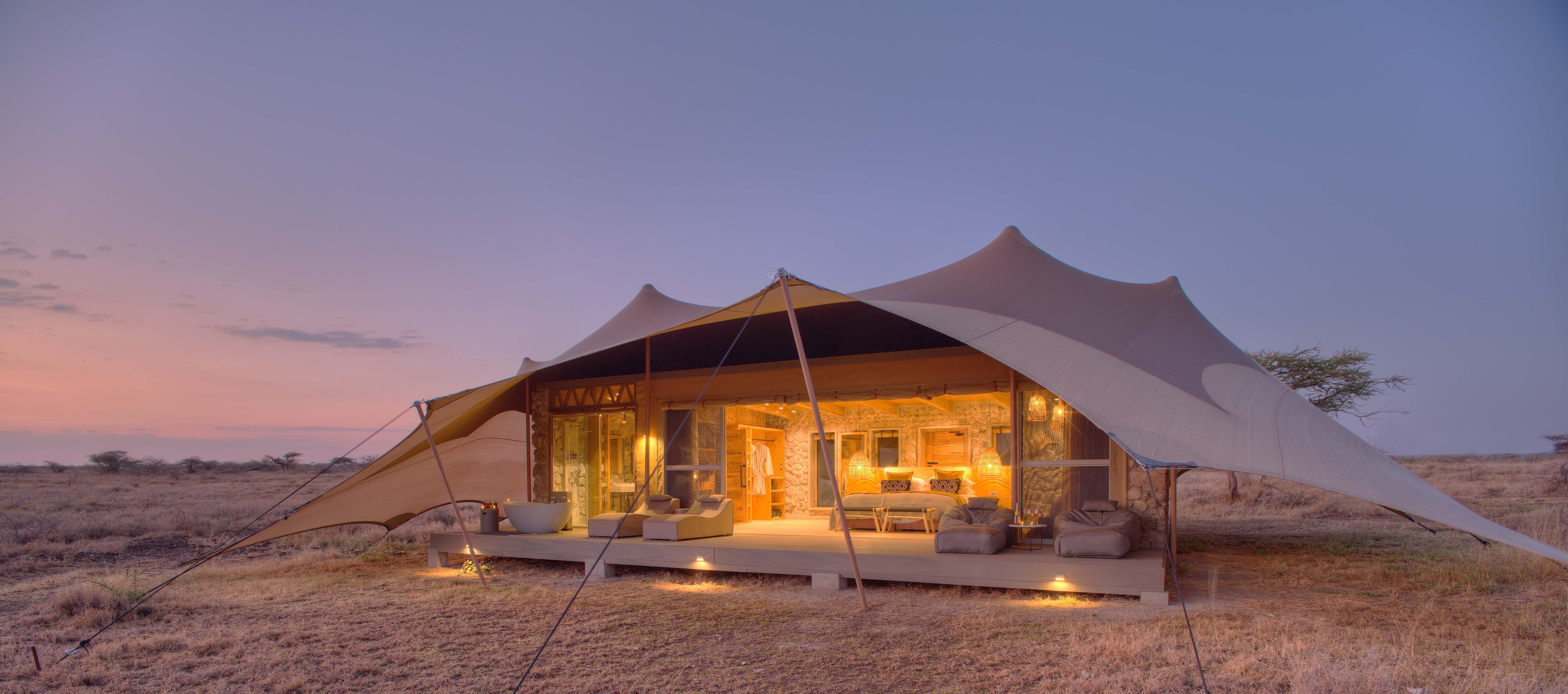
More Destinations Articles

What’s the difference? National Parks, Game Reserves, and Conservancies in East Africa
02 February 2020To most of us, a national park, game reserve, or conservancy are all the same...

7 Of Our Favourite Things About Lake Manyara National Park
04 December 2019Lake Manyara National Park is located in Tanzania's Arusha and Manyara region...

Naboisho: Home To The Mara’s Newest Pool
28 November 2019Naboisho is now home to the Mara Naboisho Conservancy’s newest pool. During t...

Guest Gallery: The Serengeti At Its Best
27 November 2019We recently had the pleasure of welcoming guests, Chris and Monique Fallows t...





